Have you ever wondered if you’re sacrificing your orchard’s full potential by skipping summer pruning? While most people instinctively reach for their pruners in winter, summer pruning for fruit trees might be the secret to bigger yields, tastier fruit, and healthier trees. This comprehensive guide unlocks proven techniques and timing tips that can revitalize any fruit tree, whether you’re tending apples, pears, or juicy stone fruit. Let’s challenge conventional wisdom together and discover the transformative power hidden in midsummer pruning!
Are You Missing Out on the Benefits of Summer Pruning for Fruit Trees?
When it comes to maximizing harvest and maintaining vibrant fruit trees , many gardeners overlook the critical advantages of summer pruning for fruit trees . This specialized technique differs from traditional winter pruning by taking place during the active growing season, allowing sunlight to reach the ripening fruit and promoting healthier, more productive trees. For those seeking quality fruit , mastering when and how to prune can dramatically improve both the current and future yields of your orchard.
By integrating smart summer pruning practices, you empower your apple trees , pears, and stone fruit to direct their energy towards fruit production instead of excessive vegetative growth. The result isn’t just better fruit this year, but also sustainable health and vitality for years to come. From practical orchard examples to tried-and-true horticultural principles, this article will guide you through every aspect to ensure you’re never missing out on a robust harvest.

Discover the Impact of Proper Summer Pruning for Fruit Trees on Your Orchard Success
- Understand why summer pruning for fruit trees is important
- Learn the best timing and techniques for summer pruning
- Master the basics for specific fruit tree types like apple and pear
- Discover common mistakes to avoid to maximize harvest
- Explore frequently asked questions about how to prune fruit trees
| Fruit Tree | Optimal Month | Key Pruning Notes |
|---|---|---|
| Apple Trees | July-August | Focus on water shoots removal |
| Pear Trees | July-August | Encourage fruit bud development |
| Stone Fruit | After harvest | Remove crowded branches |
Why Summer Pruning for Fruit Trees Matters: Principles and Benefits
Many growers are surprised to learn that summer pruning can be just as, if not more, beneficial than the traditional winter method. The main principle of summer pruning for fruit trees is to control the vigorous growth that occurs during the growing season. By reducing excess leafy shoots and water sprouts, you redirect the tree’s energy into fruit maturation and bud formation for next year’s crop. This results in stronger, more productive trees and often, higher fruit quality .
Not only does summer pruning enhance light penetration and improve airflow within the canopy—deterring various pests and diseases—but it also curbs the risk of branch overcrowding and breakage under heavy fruit loads. The practice is especially effective for apples and pears, but nearly every fruiting variety, from stone fruits to peaches, can benefit when proper techniques are applied. If you’re aiming for consistent, healthy harvests, understanding the underlying principles of summer pruning is a good idea for every orchardist.
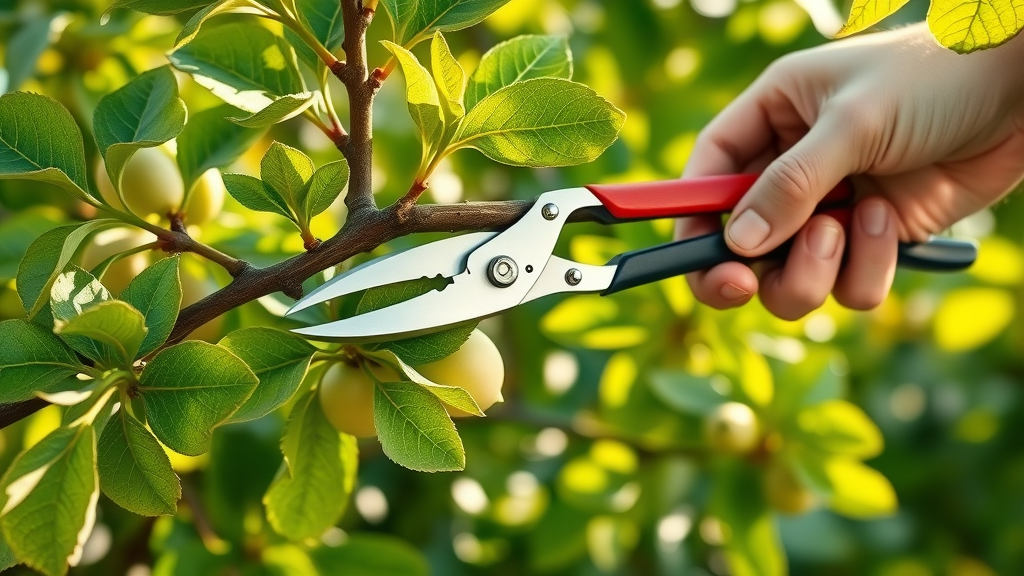
What Does Summer Pruning for Fruit Trees Achieve? Growth, Fruiting, and Tree Health
Summer pruning for fruit trees is instrumental in orchestrating a delicate balance between shoot growth and fruit production . By selectively removing vigorous upright shoots (often called water sprouts) and thin stems, you help the tree focus on maturing its existing fruit rather than pouring energy into unnecessary vegetative growth. This timely intervention fosters strong, healthy wood that supports fruit, while opening up the canopy for more even sunlight distribution and easier harvesting.
Furthermore, pruning fruit trees in the summer diminishes the risk of disease by improving air circulation and exposing problem spots early, making it easier to address pest issues before they escalate. In essence, summer pruning sets the stage for abundant crops and robust tree health, providing critical benefits that extend well beyond the current growing season.
“Summer pruning is a game-changer for fruit tree vigor and productivity, providing light and air while maximizing your orchard’s yield.”
— Horticulture Specialist
Preparing for Summer Pruning: Tools and Timing for Fruit Trees
Preparation is the first key to effective summer pruning for fruit trees . Using the right equipment and respecting plant biology can make the difference between a flourishing tree and unnecessary stress or injury. For every type of fruit tree —from apples to peaches—a well-prepared gardener will always begin with inspection and clean, sharp tools tailored to the task.
It’s also essential to understand that timing impacts results. Unlike the dormant season, when trees can handle larger cuts, summer pruning requires gentler methods due to active sap flow and increased vulnerability to drought or heat. By pairing proper tools with strategic timing, you’ll set your orchard up for optimal health and fruitfulness.
Essential Tools for Safe and Efficient Summer Pruning for Fruit Trees
Equipping yourself with high-quality pruning tools is vital for efficient work and the long-term health of your fruit trees . For most pruning tasks, a sharp pair of bypass secateurs is perfect for clean cuts on fresh shoots. Loppers come in handy for thicker stems and higher branches, while a small pruning saw can tackle larger, older wood when necessary. Always include weather-resistant work gloves for safety, and have a reliable sharpening stone on hand to keep blades in top condition.
For best results, sterilize your tools with rubbing alcohol or a dilute bleach solution before moving between trees to prevent spreading disease. Maintaining your equipment well not only results in better pruning cuts but helps the tree heal faster and reduces your workload by preventing repetitive snipping. Smart preparation now leads to healthier, more resilient trees all season long.
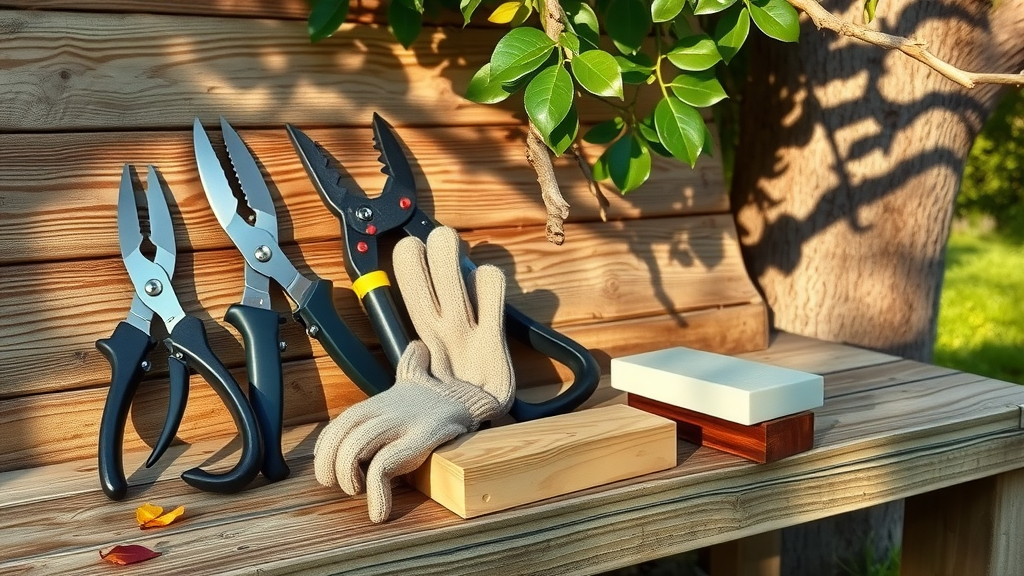
How to Identify the Perfect Time to Prune Fruit Trees for Maximum Benefit
Choosing the right time to prune fruit trees in the summer depends largely on the species and your local climate. In general, apple and pear trees are ready for their summer haircut between July and August , just as new shoots stop growing rapidly and fruits are sizing up on the branches. For stone fruit —like peaches, plums, or cherries—the best window is immediately after harvest, minimizing stress on the tree while still encouraging robust bud development .
Always avoid pruning during periods of extreme drought or heat, as actively growing trees are more sensitive to water loss and sunburn. Instead, wait for a mild day with ample soil moisture to reduce recovery time. By understanding each tree’s growth cycle and observing your orchard closely, you’ll know exactly when it’s a good idea to make those strategic snips that can elevate fruit production and tree health for seasons to come.
Summer Pruning Techniques for Different Fruit Trees
No two orchards—or fruit trees —are exactly alike. Effective summer pruning tailors methods to the species and even the individual tree’s health and age. This section unpacks top techniques for both classic favorites, like apples and pears , and specialty crops such as peaches or plums. Armed with these step-by-step instructions, you’ll unlock a repeatable, results-driven approach to summer pruning that leaves your orchard healthier, tidier, and more productive.
From recognizing which branches to cut to spotting common pitfalls, these expert strategies will help you create open, sunlit canopies and foster quality fruit with every growing season.
How to Summer Prune Apple Trees and Pear Trees: Step-by-Step Instructions
The technique for summer pruning apple trees and pears focuses on redirecting the tree’s energy from vegetative growth to fruit maturation . First, identify and remove all water shoots—those long, upright stems sprouting from the top and trunk. These shoots sap energy from the tree and prevent light from reaching the fruit. With sharp, sanitized secateurs, cut water shoots back to their base, taking care not to damage the surrounding tissue.
Next, thin out any crowded branches, especially in the center of the canopy, to improve light penetration and airflow. Remove diseased, dead, or crossing branches, making each pruning cut clean and angled slightly away from buds to encourage quick healing. Avoid major “heading cuts” (cutting back large limbs) in summer, as this can stress the tree. Finally, step back and review your work—an ideal canopy should appear open and sunlit, with space for fruit to swell and ripen evenly.

Tailored Methods for Stone Fruit Tree Summer Pruning
Stone fruits—such as peaches, plums, and cherries—have slightly different requirements for summer pruning. Once harvest is complete, focus on removing shoots that grew that season, particularly those growing vertically (water sprouts) or at congested intersections. By thinning these, you allocate the tree’s resources towards bud formation on fruiting wood, setting the stage for a strong crop next year.
Unlike apples and pears, stone fruit trees benefit from a moderate “thinning out” approach rather than severe reduction. Place your cuts to open up the tree’s center, minimize rubs or crossovers, and enhance both air and light movement. Periodically step back to ensure even spacing and avoid over-pruning, which could weaken the tree or expose it to heat and drought stress. This gentle, targeted approach leads to consistent fruiting and minimizes disease risk in peaches and other stone fruit.
Pro Tips: Avoiding Risks and Common Mistakes When You Prune Fruit Trees
Expert orchardists know that summer pruning for fruit trees is as much about what you don’t cut as what you do. One common mistake is removing too much canopy all at once, leading to sunburned bark, excessive stress, and even reduced root growth . Only take off what’s necessary to shape the tree and improve fruit quality —never more than a quarter of the leaf area in any season.
Watch for signs of drought or heat stress, like wilting leaves or soft fruit, and always avoid pruning on exceptionally hot days. Make each pruning cut with clean tools and targeted precision—never tear branches, which can introduce disease. Finally, always step back after each round to assess balance and canopy structure. This prevents hasty over-pruning and ensures your work sets up the tree for ongoing success.
- Remove water sprouts and excess growth
- Improve sunlight penetration
- Encourage bud formation and healthy fruiting
- Do not prune heavily during drought or heat stress
Frequently Asked Questions About Summer Pruning for Fruit Trees
Which Fruit Trees Need Summer Pruning?
Most fruit trees benefit from some form of summer pruning , notably apples, pears, and stone fruit (like peaches, plums, and cherries). The key is to assess whether your trees experience dense summer growth that shades fruit or encourages pests. Trees with rampant shoot growth, crowded canopies, or recurring disease problems are top candidates for summer pruning. While not all fruit trees need heavy summer attention, judicious trimming can enhance almost every tree’s productivity and health throughout the growing season.
What is the 123 Rule of Pruning?
The 123 rule of pruning is a helpful guideline to remember: Prune 1) dead or diseased wood first, 2) crossing or rubbing branches next, and 3) excessive, unproductive shoots last. During summer pruning for fruit trees , this method ensures you target the most pressing structural issues before thinning out healthy growth for light and air. The approach creates a prioritized workflow that minimizes mistakes and promotes balanced, healthy apple trees , pears, and stone fruits each season.
What Month Should You Prune Your Fruit Trees?
The ideal time to prune fruit trees in summer varies by species and climate. For apples and pears, July and August are most effective—when the trees have finished rapid spring growth, but before the fruits fully ripen. Stone fruits like peaches and plums are best pruned immediately after harvest . Always check local weather to avoid heatwaves, and observe each tree’s unique growth pattern for precise timing.
What Happens if You Prune a Tree in the Summer?
When done correctly, pruning a tree in the summer will reduce excessive shoot growth, direct energy into developing fruits and strengthening buds for the following year, and improve disease resistance by opening up the canopy. However, heavy or poorly timed pruning—especially during drought or heat stress—may shock the tree, decrease fruit quality, or increase vulnerability to pests. Always use sharp, clean tools and moderate techniques to avoid unintended damage during the active growing season.
Expert Answers to More Summer Pruning for Fruit Trees FAQs
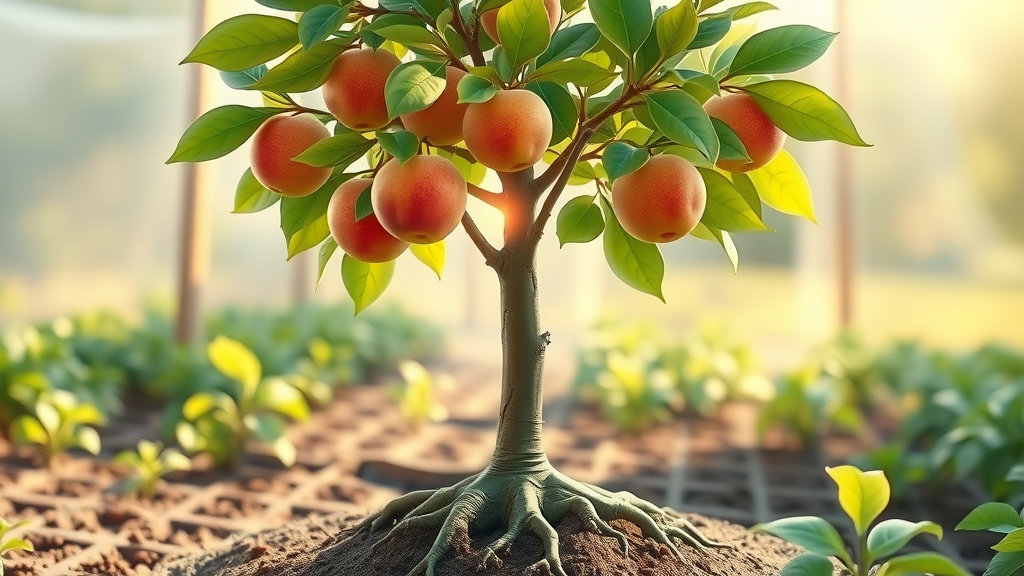
Does Summer Pruning Work for Young Fruit Trees?
Yes, summer pruning can be excellent for young fruit trees when performed cautiously. For the first couple of years, the focus should be on establishing strong, well-spaced scaffold branches rather than maximizing fruit production. Remove competing leaders, wayward shoots, and any growth that impedes the tree’s balanced structure. Avoid drastic cuts; instead, use light thinning to support healthy form and future productivity without hindering root or vegetative development.
How Does Summer Pruning Help Manage Pests and Disease?
Summer pruning naturally reduces pest and disease issues by increasing sunlight and air movement within the canopy. This creates a less hospitable environment for fungal pathogens and discourages common pests such as aphids or fruit flies, who thrive in dense, shaded conditions. Additionally, removing diseased wood and checking the tree’s structure during summer makes spotting problems early much easier, so you can act before infestations or damage becomes widespread.
Can You Prune Fruit Trees Heavily in Summer?
It’s generally best to avoid heavy summer pruning for fruit trees. Excessive removal of foliage can stress the tree, reduce fruit quality, and leave it vulnerable to sunburn. The recommended approach is to focus on thinning out water sprouts and overcrowded branches, removing no more than 25% of the leaf area at any time. For major structural work, winter or early spring is the better time, when the trees are dormant and can recover from more aggressive cuts safely.
Key Insights for Successful Summer Pruning of Fruit Trees
Achieving orchard excellence through summer pruning for fruit trees involves both science and art. As you gain experience, remember that every cut should serve a specific productive purpose—shaping structure, improving light access, or nurturing next year’s harvest. Consistent summer routines, coupled with careful observation and adaptation, will keep your fruit trees vigorous and your baskets full for years to come.
To sum up your action plan:
- Summer pruning boosts fruit quality and tree health
- Tailor techniques to each fruit tree type
- Use clean, sharp tools and prune at the optimal time
- Monitor tree response and adapt your approach yearly
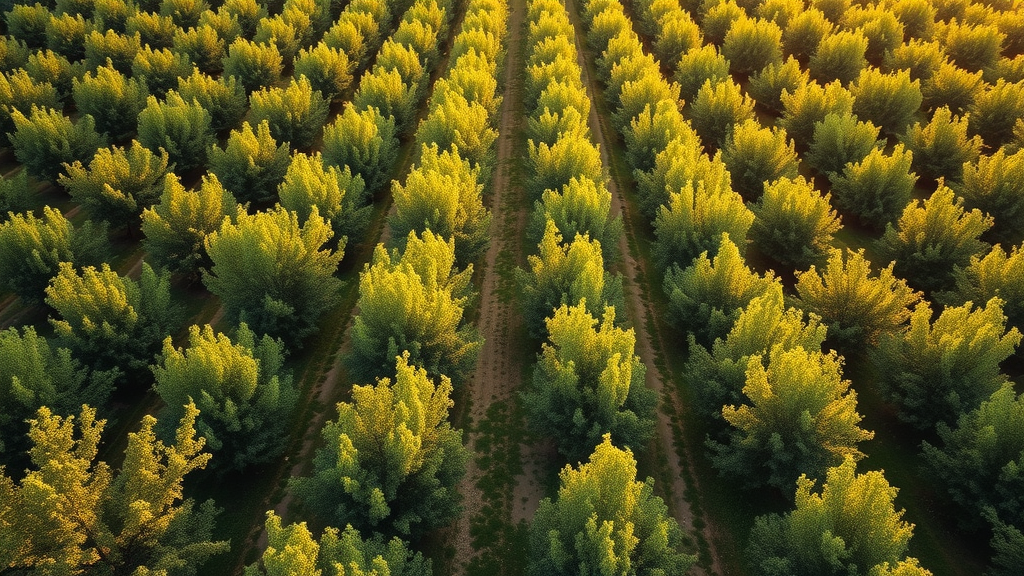
Let’s Enhance Your Orchard: Reach Out for Personalized Advice on Summer Pruning for Fruit Trees
Unlock your orchard’s full potential with expert guidance! Share your insights on Tree Care — call 203-271-7991 to discuss your specific situation and get tailored advice on summer pruning for fruit trees .
Summer pruning is a vital practice for enhancing fruit tree health and productivity. The article “7 Fruit Trees to Prune in August for a Bigger, Better Harvest” provides expert advice on pruning techniques for various fruit trees, emphasizing the importance of timing and method to improve air circulation, sunlight access, and fruit ripening. ( homesandgardens.com ) Additionally, the University of California’s guide on “Pruning Fruit Trees” offers comprehensive insights into the benefits of summer pruning, including improved fruit yield and tree structure. ( ucanr.edu ) For a detailed understanding of pruning cuts and their impact on tree health, the University of Illinois Extension’s resource “Making Pruning Cuts” is invaluable. ( extension.illinois.edu ) If you’re serious about maximizing your orchard’s potential, these resources will provide you with the knowledge and techniques necessary for effective summer pruning.
 Add Row
Add Row  Add
Add 


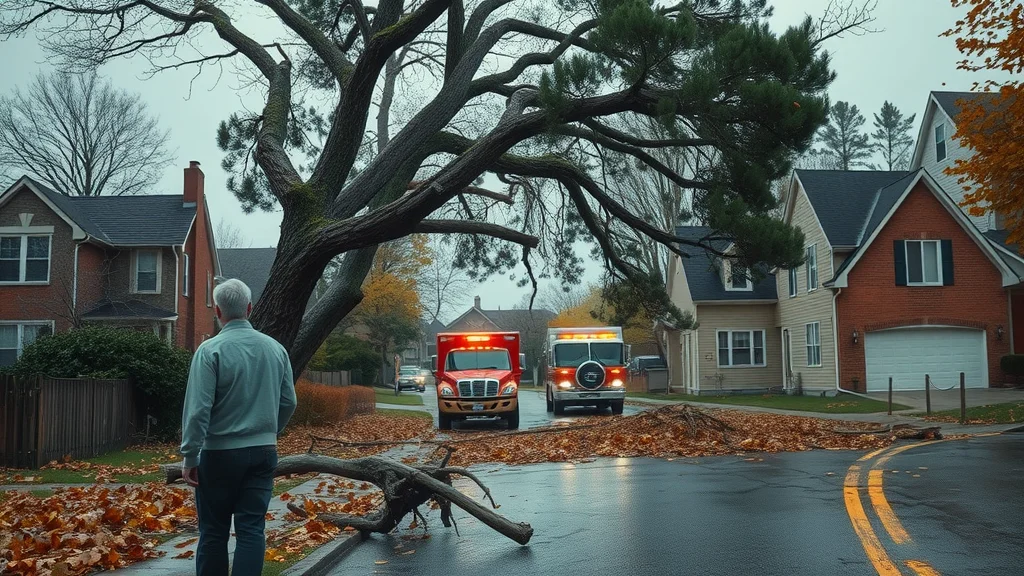

Write A Comment